What the Historic Town of Lāhainā, the Maui Town Affected by the Wildfires, Means to Its Residents
Lāhainā, a town considered a portal to the past for native Hawaiians, is now "tragically gone."
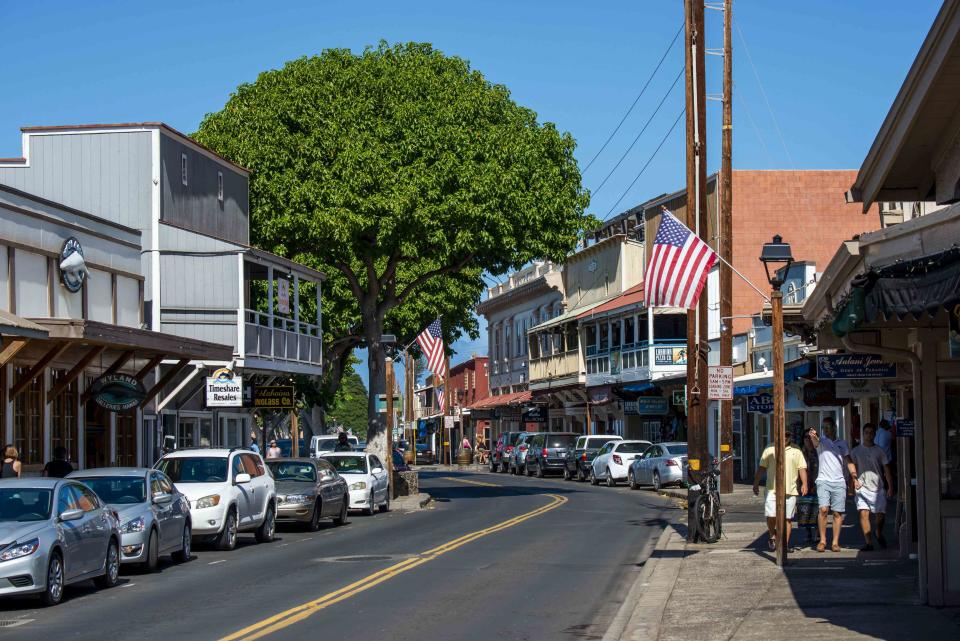
Getty Images
Travelers who have visited the historic town of Lāhainā on Maui’s western coast might reminisce fondly of sitting under the banyan tree enjoying the tradewinds, walking in and out of the shops down Front Street, taking in the ocean views from the harbor or eating an ice cream cone from Lappert’s in the sunshine.
While the beloved coastal town plays host to more than two and a half million tourists who visit Maui annually, Lāhainā is home to more than 12,000 residents and has a past deeply rooted in Hawaiian culture.
Earlier this week, the town, which once served as the capital of the Hawaiian Kingdom, was decimated to ash and rubble due to tragic wildfires, as seen in satellite images shared by Maxar Technologies.
For Native Hawaiians, Lāhainā serves as a portal to their past.
“If you start from one end of Front Street and walk to the other end, it’s like a physical timeline of the history of the Hawaiian Kingdom,” Kaniela Ing, a former Hawaii state representative, told NBC News, of the famous street lined with restaurants, shops and other buildings that serve as reminders of the town’s deep roots. “You can actually see the flow in the buildings stemming back 150 or more years. It’s remarkable and just the thought that that history may have been lost in this fire or any bit of that history is heartbreaking."
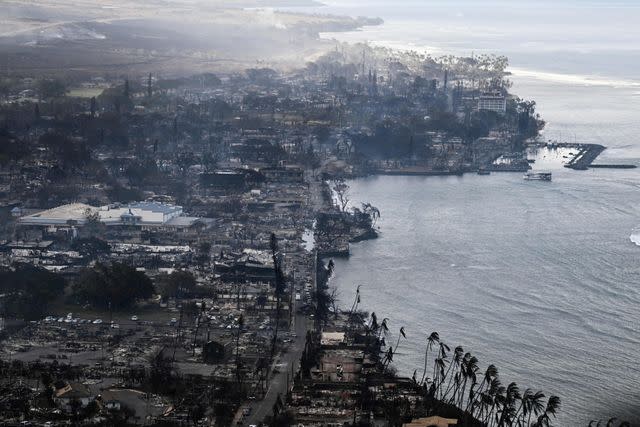
Getty Images
Originally settled by Polynesion voyagers, Hawaii was unified as a single kingdom by King Kamehameha I in 1795, controlling all of the islands except two.
“Kauai and Niʻihau did not come under his rule until 1810,” Davianna McGregor, a retired professor of ethnic studies at the University of Hawaii at Manoa, told Travel + Leisure.
According to Lāhainā’s official website, King Kamehameha I established Lāhainā as the capital of Hawaii Kingdom in 1802 (this differs from the National Park Service’s record of 1820) and built a palace, as well as other royal buildings, in the town, creating a political center for the Islands.
Dr. Ty Kāwika Tengan, professor of anthropology and ethnic studies at University of Hawaii at Manoa with a focus in pre colonial and contemporary Hawaiian society, says that in addition to being the Kingdom’s capital, Lāhainā served as a religious and spiritual focal point.
“It was traditionally a center for chiefly mana, which is our term for spiritual power and authority,” Tengan told T+L of Lāhainā, adding that that area was also significant for being connected with the first major school, Lāhaināluna, as well as the seminary. “It also has a very deep history of establishing the first printing press (and) helping to be the intellectual source for generations of Hawaiians during the Kingdom and even to this day.”
Thanks to its seaport access and position along popular trade routes, Lāhaināstarted to become a whaling and fishing hotspot in the 1820s, welcoming more than 400 whaling vessels each year by the 1850s, including famed Moby Dick author Herman Melville.
Though the capital city was moved to Honolulu in 1845, Lāhainā remained a prominent city for gathering of royalty, economic development and culture.
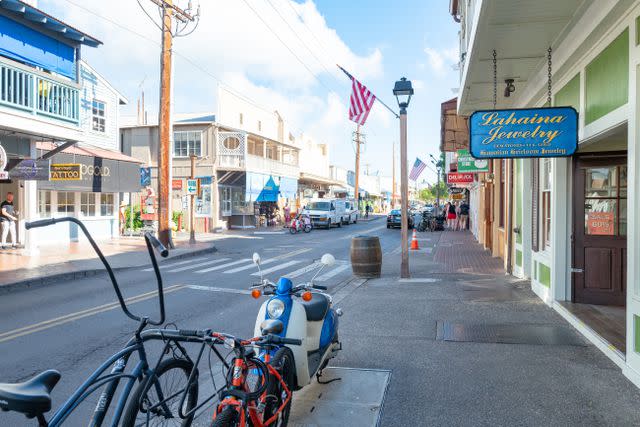
Getty Images
“Lāhaināhas this deep history of indigenous resilience that has allowed – for generations of newcomers and visitors and settlers alike – to be a part of the building of a nation…a Hawaiian nation in the hearts of many (that is) separate from America,” Tengan explained, referencing the American coup in 1893 to illegally overthrow Queen Lili’uokalani that led to Hawaii’s loss of independence and eventual annexation in 1898. “Despite the transformations from tourism (and) sugar, Lāhainā remains sacred…remains central…to who we are as people from Hawaii and specifically those of us from Maui.”
As recovery efforts continue and the death toll continues to rise, Hawaii Lieutenant Governor Sylvia Luke called the sight of the former Lāhainā Town via helicopter “so shocking and devastating” and Governor Josh Green shared a live update front Lāhainā’s Front Street where burned buildings reduced to smoldering piles could be seen in the background.
“Behind me you can see the devastation here in Lāhainā,” Green said. “It's extraordinary, it is tragically gone.”
Beyond the incinerated streets of the coastal town, historic landmarks that held so much of history — and cannot be easily rebuilt or replaced — have also been lost, including the Lāhainā Banyan Tree, Baldwin Home Museum, Pioneer Inn and Waiola Church.
Lāhainā Banyan Tree
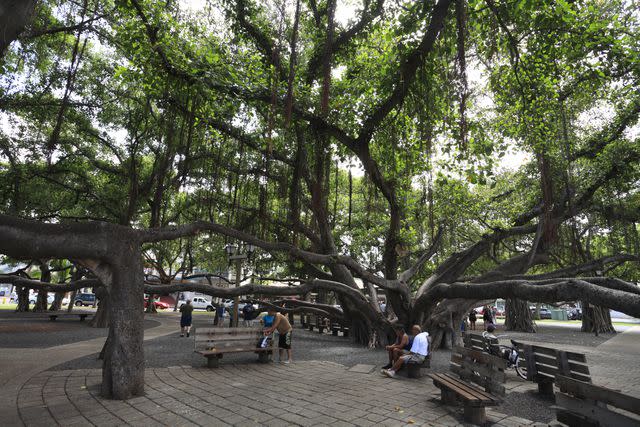
Getty Images
Planted in 1873 to honor the 50th anniversary of the first Protestant mission in Lāhainā, the banyan stood just 8-feet when it was gifted, according to the Lāhainā Restoration Foundation. The tree grew to become a central part of the Lāhainā’s charm with roots and limbs extending outward, almost embracing the town center in a hug, and last measured at one quarter of a mile in circumference. It is believed to be the largest banyan tree in the U.S.
Hawaii Senator Brian Schatz tweeted a video of the 150-year-old tree, which appears to be badly burned, but still standing.
Banyan Tree in Lahaina smoldering at the base, but still standing. Just about the only thing left, other than the Lighthouse. pic.twitter.com/t0lGeOwY2H
— Brian Schatz (@brianschatz) August 10, 2023
Baldwin Home Museum
It is feared that the Baldwin Home Museum, the oldest home in Maui, did not survive the flames.
“Everything we have seen on others’ social media seems to indicate that the Baldwin Home Museum did indeed fully burn,” Kimberly Flook, deputy executive director of the LāhaināRestoration Foundation, told The Washington Post. “Images and video show what may be walls standing, but all else gone.”
Built between 1834 and 1835, the home housed medical missionaries Dwight Baldwin and Charlotte Fowler Baldwin from New England, as well as their eight children — all of whom were born in Hawaii. As their family grew, the Baldwins added additions, including a complete second story, to the original four-bedroom structure. In 1967, the home was deeded to the LāhaināRestoration Foundation, who maintained the property.
Pioneer Inn
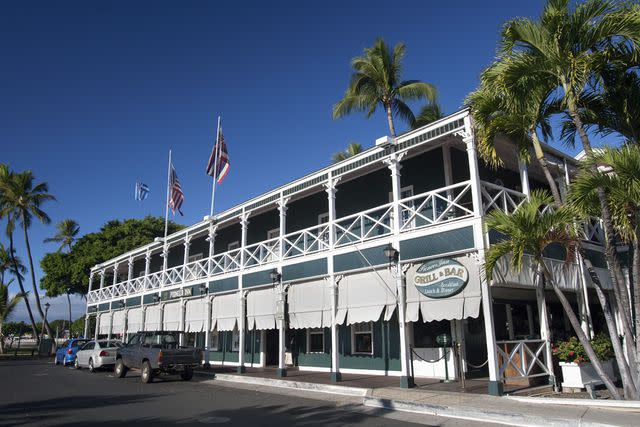
Getty Images
The Pioneer Inn, a hotel dating back to 1901, is another casualty of the Maui wildfires. According to Mufi Hannemann, president and CEO of the Hawaii Lodging & Tourism Association, the Inn was “obliterated — unfortunately, it was just destroyed.”
One of nine buildings that encompass Lāhainā Historic District, which was designated a National Historic Landmark in 1962, the 34-room Inn was a popular stopover for whalers throughout the 19th century. It has been a member of the Historic Hotels of America since 2016.
Waiola Church
Wailoa Church, which celebrated its 200th anniversary earlier this year, according to its website, was founded by Queen Keōpūolani in 1823, and is considered the first Christian church established in Maui.
Originally named Waineʻe, the church’s graveyard is the sacred final resting place of Kingdom royalty, including Queen Keōpūolani, the wife of King Kamehameha I and mother to King Kamehameha II.
A viral image released Tuesday showed the church’s hall engulfed in flames, as well as neighboring Pūnana Leo, a language education center for children, and a temple, which belonged to the Hongwanji Shin Buddhist community.
“It’s a real loss,” Hawaii Senator Gilbert Keith-Agaran told USA Today of the historic landmarks lost. “Hawaii and Maui have tried really hard to preserve and protect those places for many, many years … not for the sake of tourism, but because it’s part of our cultural heritage."
For more Travel & Leisure news, make sure to sign up for our newsletter!
Read the original article on Travel & Leisure.


